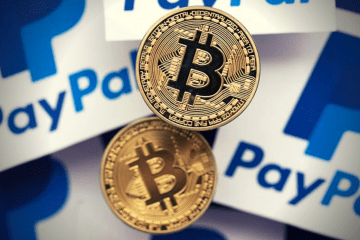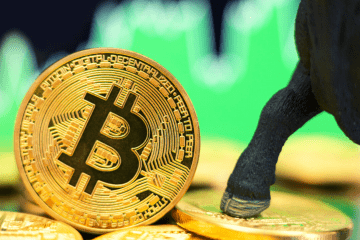The Bitcoin Dream Is Dead
OnMay 22, 2010, a Bitcoin developer named Laszlo Hanyecz bought what may have been the most expensive meal in human history when he paid someone 10,000 Bitcoins to pick up and deliver him two pizzas from Papa John’s. Given that one Bitcoin is now worth more than $30,000, those pizzas cost, in retrospect, somewhere north of $300 million.
Nowadays, of course, no one would think of shelling out Bitcoin for something as mundane as a pizza without thinking first about how much money they might be giving up in the future. In the years since Hanyecz’s splurge, Bitcoin has gone from being an interesting experiment in decentralized finance to being the best-performing asset of the decade, rising more than 10,000,000% since 2010 and jumping 220% last year alone. There’s a Bitcoin ticker on every finance website. Legendary investors like Paul Tudor-Jones, Stanley Druckenmiller, and Bill Miller speak approvingly of its prospects, and companies like Square and MicroStrategy have invested their corporate cash into Bitcoin. Despite being extraordinarily risky and volatile — as evidenced by the 25% drop it took between last Friday and Monday afternoon — Bitcoin has, in some sense, been admitted to the club and is now seen by many as a plausible competitor to assets like gold. But along the way, something odd happened: Bitcoin completely lost its original reason for being.
Bitcoin was, after all, not designed to be a speculative asset. It was designed to be a currency, a new medium of exchange that people could, and would, use to transact daily business with each other. (That’s why we call it a cryptocurrency.)When Bitcoin was first introduced to the world in 2008 in a white paper, its mysterious creator, who dubbed himself Satoshi Nakamoto, described it as “a purely peer-to-peer version of electronic cash [which] would allow online payments to be sent directly from one party to another without going through a financial institution.” He billed Bitcoin as “an electronic payment system based on cryptographic proof instead of trust, allowing any two willing parties to transact directly with each other without the need for a trusted third party,” like a bank or credit card company. And that’s exactly what Hanyecz was doing on that day in 2010: sending an electronic payment directly from himself to another person without any third party being involved. He may have unknowingly made a terrible investment decision, but he was using Bitcoin exactly as it had been designed to be used.
It’s easy to forget now, but Bitcoin’s promise in those early days was that it would be a new currency, one that could challenge the hegemony of so-called fiat currencies like the dollar (which are issued by governments) by being untraceable money that would allow people to conduct business cheaply and anonymously. And because Bitcoin was designed to have a fixed number of coins — it will have 21.5 million coins as of 2040, and then no more — people could use it without worrying about inflation debasing its value. It was a kind of cyberpunk fantasy that enchanted many. As recently as 2018, Twitter CEO and Square founder Jack Dorsey said, “The world will ultimately have a single currency. I personally believe that it will be Bitcoin.” Even today, you can still find pundits who trumpet Bitcoin’s revolutionary possibilities and point to things like PayPal’s plan to offer its merchants the ability to transact in cryptocurrencies in 2021 as evidence that radical change is afoot.
The more people hoard Bitcoin, treating it as a speculative asset, the less appealing it seems as a currency.
And yet the reality is that Bitcoin has never really functioned as a currency. Almost from the beginning, only a small percentage of Bitcoin transactions have been for actual goods and services — and of those, many have been for illicit goods and services, like drugs and online gambling. Most Bitcoin transactions have been trades: people simply buying and selling it. The blockchain analysis company Chainalysis, for instance, found that in the first four months of 2019, just 1.3% of total transactions involved merchants. And that trend has only accelerated as the value of Bitcoin has soared. Strikingly, despite the speculative fervor that has surrounded Bitcoin, the total number of transactions has risen only mildly over the past two years. And that number is so small relative to the total number of electronic bank and credit card transactions as to be barely worth mentioning. On average, there are now around 325,000 Bitcoin transactions — including trades — per day. There are roughly a billion credit card transactions per day.
Some of the failure of Bitcoin to live up to its promise as a currency has to do with practical problems with the way it works, most obviously the fact that Bitcoin’s design makes it very slow at processing transactions. For instance, Visa processes approximately 6,000 transactions a second and has the capacity to do many times that. Bitcoin can do seven. So Bitcoin transactions often take a long time to complete, which doesn’t work so well if you’re trying to use Bitcoin at the local convenience store or even buying something online. Bitcoin’s transaction fees have also, at different points, been shockingly high. During the last Bitcoin boom, in 2017, fees reached as high as $55 per transaction, and while they’ve come down sharply since then, as recently as last May it cost more than $6 to buy something with Bitcoin. That’s not a problem if you’re making an investment, but it’s a big obstacle if you want to buy a pizza.
The more fundamental problem for Bitcoin as a currency, though, has to do with the very thing lots of people like about it—namely that the supply of Bitcoin is controlled and limited. Because the supply is limited, when demand for Bitcoin rises (because, say, people are convinced they can get rich quick by buying it), then the value of Bitcoin is going to rise as well. So, if you believe your Bitcoin is going to become more popular, then it’s foolish to spend it on a pizza: You should hoard it and then sell it once its price rises. And since you can get along perfectly well without spending Bitcoin, there’s never been anything pushing people to stop hoarding. The more people hoard Bitcoin, treating it as a speculative asset, the less appealing it seems as a currency.
On top of this, the extraordinary volatility of Bitcoin’s price — which, as we’ve seen in the past week, can fall 10% to 20% overnight — discourages businesses and individuals from accepting Bitcoin in exchange for real goods and services, since few people want to get paid today with something that might be 10% less valuable tomorrow. (Of course, it might also be 10% more valuable. But that kind of gamble isn’t one most businesses are interested in making.)
Like gold, Bitcoin is valuable to the extent that people think it’s valuable: You buy it because you think someone else will pay more for it in the future
Bitcoin’s transformation from putative currency to speculative asset, in other words, was effectively built into the system from the start. It’s where Bitcoin was headed all along. (Cryptocurrencies have emerged in Bitcoin’s wake that are better designed to function as currencies, but paradoxically they’re nowhere near as popular as Bitcoin.) Even though it may have been designed as a payment system and a medium of exchange, Bitcoin’s real appeal was, inevitably, going to be as what economists call a “store of value,” a kind of digital analogue to gold. Like gold, Bitcoin is valuable to the extent that people think it’s valuable: You buy it because you think someone else will pay more for it in the future. And like gold, its value can’t be inflated away by a central bank.
The fact that Bitcoin has no intrinsic value (the way a stock or bond does) doesn’t mean it’s headed to zero. It just means that Bitcoin has become totally untethered from its original purpose. What was supposed to be a way to revolutionize people’s everyday financial lives is now mostly a way for people to get rich quick (or lose their shirts) or, in an ideal scenario, for people to protect their wealth against inflation. Bitcoin began as a cryptocurrency. It has ended as a cryptoasset.
Source: marker.medium.com


